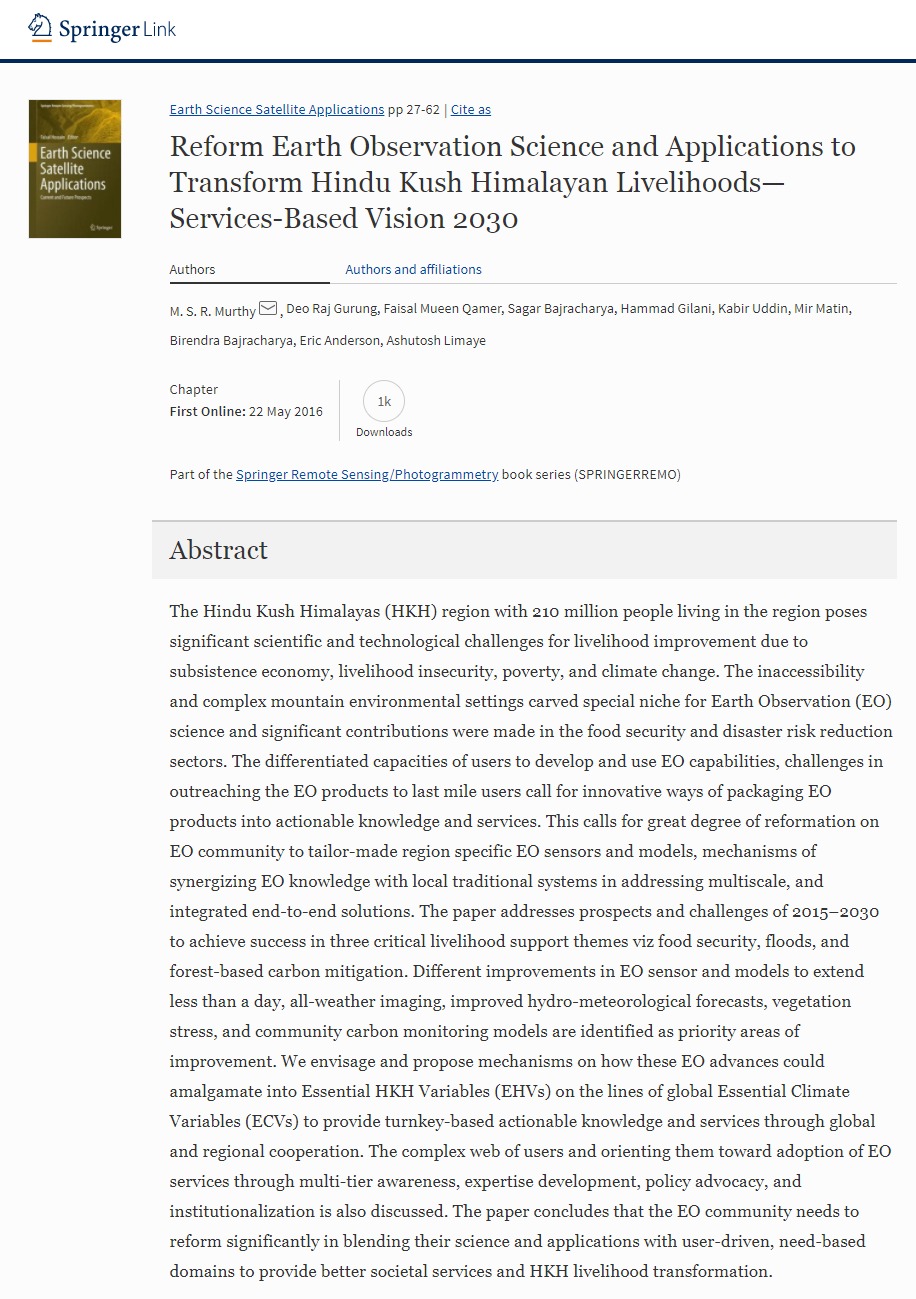
The Hindu Kush Himalayas (HKH) region with 210 million people living in the region poses significant scientific and technological challenges for livelihood improvement due to subsistence economy, livelihood insecurity, poverty, and climate change. The inaccessibility and complex mountain environmental settings carved special niche for Earth Observation (EO) science and significant contributions were made in the food security and disaster risk reduction sectors. The differentiated capacities of users to develop and use EO capabilities, challenges in outreaching the EO products to last mile users call for innovative ways of packaging EO products into actionable knowledge and services. This calls for great degree of reformation on EO community to tailor-made region specific EO sensors and models, mechanisms of synergizing EO knowledge with local traditional systems in addressing multiscale, and integrated end-to-end solutions. The paper addresses prospects and challenges of 2015–2030 to achieve success in three critical livelihood support themes viz food security, floods, and forest-based carbon mitigation. Different improvements in EO sensor and models to extend less than a day, all-weather imaging, improved hydro-meteorological forecasts, vegetation stress, and community carbon monitoring models are identified as priority areas of improvement. We envisage and propose mechanisms on how these EO advances could amalgamate into Essential HKH Variables (EHVs) on the lines of global Essential Climate Variables (ECVs) to provide turnkey-based actionable knowledge and services through global and regional cooperation. The complex web of users and orienting them toward adoption of EO services through multi-tier awareness, expertise development, policy advocacy, and institutionalization is also discussed. The paper concludes that the EO community needs to reform significantly in blending their science and applications with user-driven, need-based domains to provide better societal services and HKH livelihood transformation.